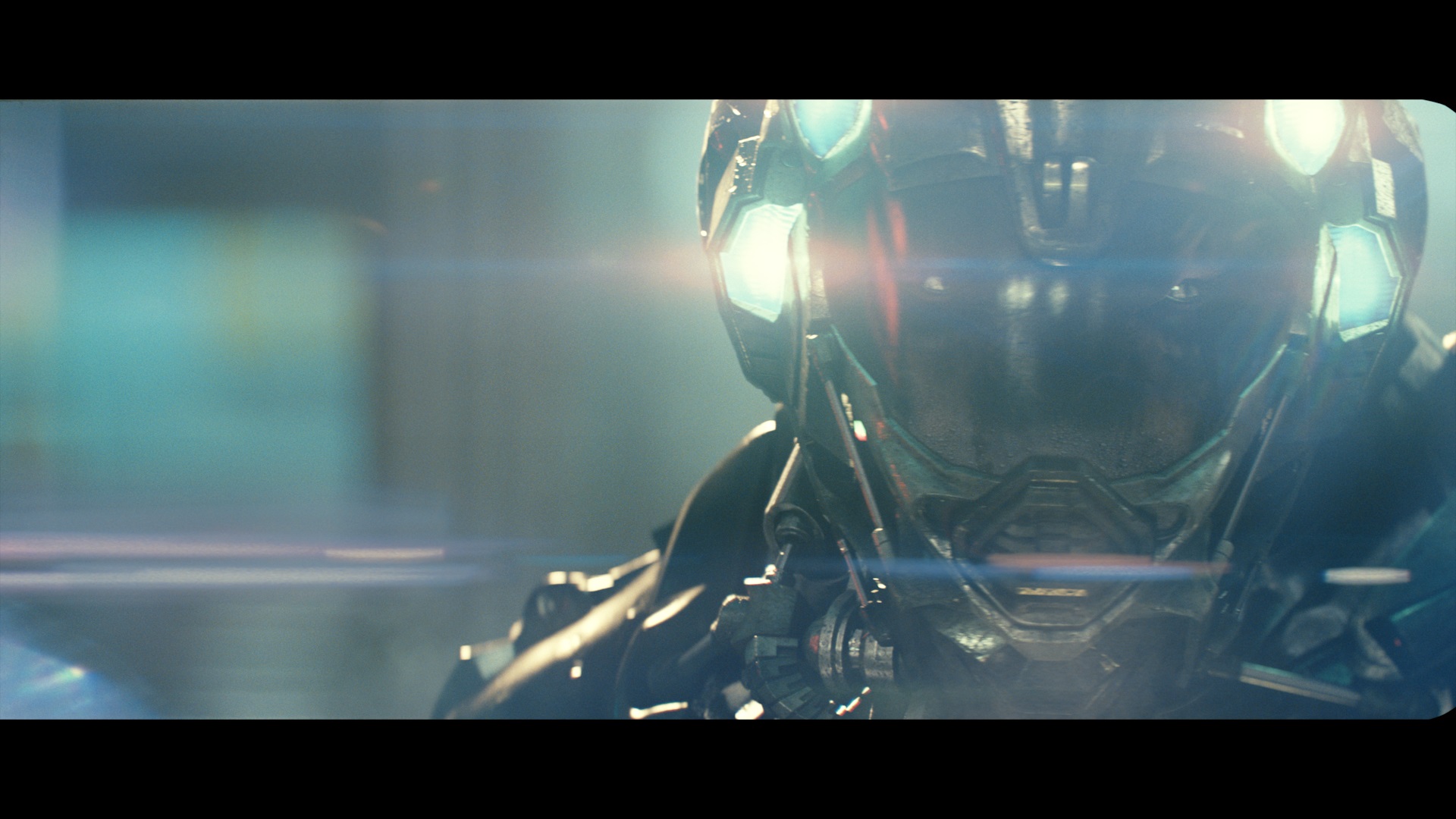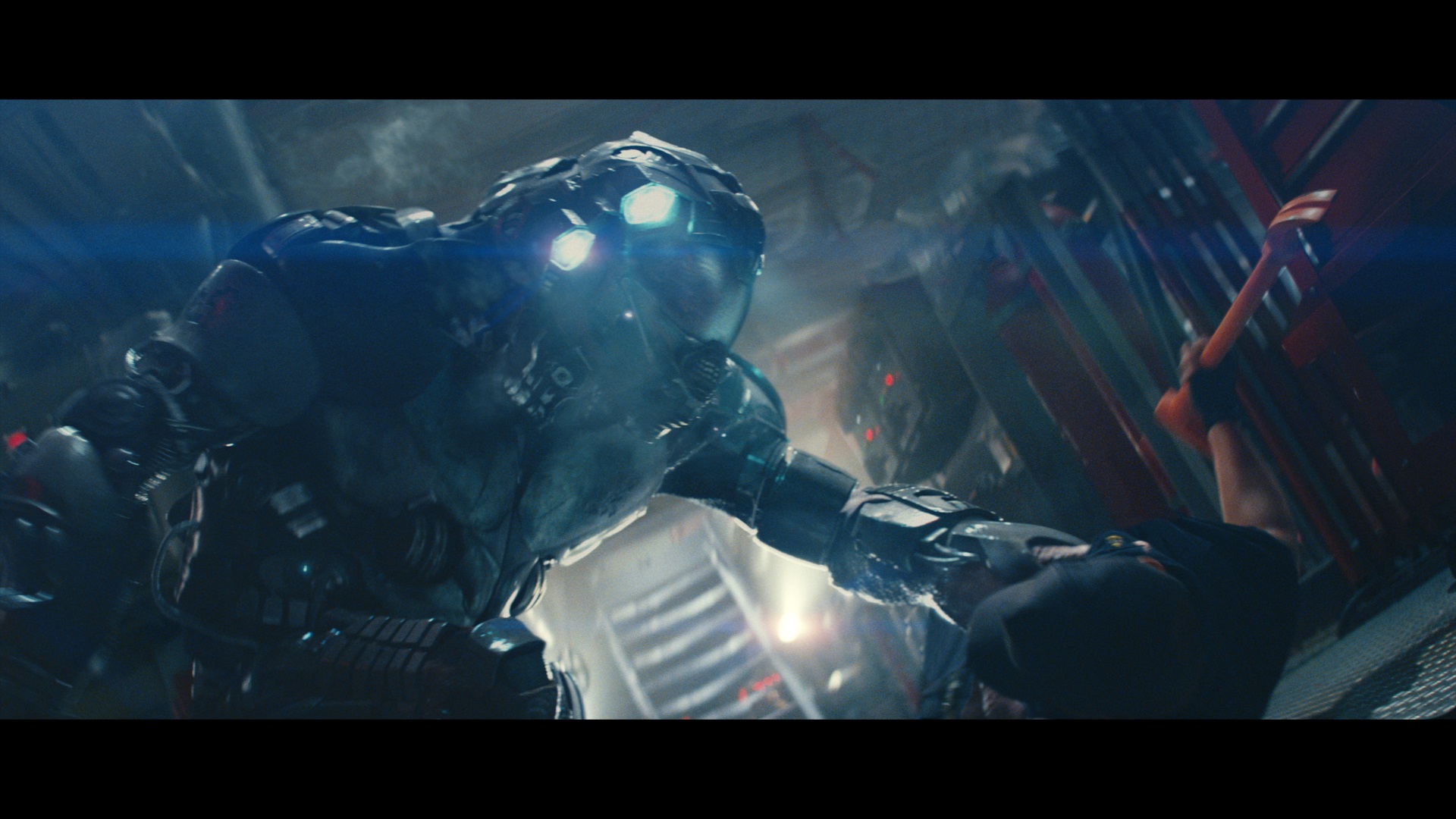Image Engine is a Vancouver-based VFX studio who specializes in feature film work. Given the fact that Director Peter Berg was impressed by their work from the feature film District 9, Industrial Light & Magic awarded them work on his most recent project, Battleship.
In Battleship, Image Engine were involved in a climactic sequence of events involving the antics and then destruction of a heavily armoured robotic alien creature nicknamed “The Thug”.
“Given that the sequence was initially planned to have so much destruction, we started using Houdini from day one”, says Jacob Clark, Lead FX Technical Director at Image Engine.
Houdini provided them with an adaptable tool that allowed them to keep a handle on a project growing in complexity as well as save an incredible amount of time when shot changes were requested. With Houdini Digital Assets, they could easily exchange work between the different studio departments.
Blown To Bits And Pieces
The Thug alien met its maker when it was struck by a cannon shell at point-blank range. The shell detonated within the creature, resulting a fiery, fragment-filled explosion.
“Peter Berg decided that the alien shouldn't just disappear into a cloud of smoke, but rather we should give the audience a much more satisfying and explosive end to The Thug”, explains Jacob.
Jacob’s FX team handled the shots involving the Thug’s detonation. They began by making use of Houdini’s Rigid Body Dynamics (RBD) and Particle systems to peel away the metallic armor covering the creature piece by piece. The RBD system fragmented the armour. Initially, some of the metal fragments bent backwards with the help of the new Cloth Solver. Particle systems were employed to create smoke and breath emitting from the creature.
Over time the Thug creature grew in complexity and was eventually wearing well over 800 pieces of interlinking body armor. Many of the simulation FX relied on low-resolution models for collisions and sources. Houdini’s Surface Operators (SOPs) helped keep things under control and were used to process the high-resolution character model into manageable pieces with a dramatically reduced point count.
For the sources and collisions to the simulation, the flying armor was converted to Signed Distance Field (SDF) volumes. The Thug itself was turned into a source for its own fire simulation to be immediately incinerated.
Pyro FX 2
“After the simulated armor animation was signed off, we started digging our teeth into the Houdini 12 Pyro FX simulation technology” says Jacob. “From early on, our FX team was very impressed with Houdini’s ability to get something looking good with just the few clicks”.
Working with the Side Effects Software development team, and using the provided tutorial files, they started early on producing proof of concept explosion effects. They discovered that by moving many of the simulation components to SOPs, they had a great deal more control of the effects.

After settling in with Pyro 2, the next step was to keep evolving the shot of the detonating Thug. Peter Berg had decided that there needed to be more emphasis on the visceral destruction of the Thug -- essentially blowing apart the creature from within then projecting outward. This meant going back to the drawing board and completely redesigning the entire effect.
“Luckily Houdini 12 was robust enough to allow for such broad changes, and within only a couple weeks the team were able to turn around and redesign the effect completely”, comments Jacob.
Houdini Digital Assets
Houdini Digital Assets (HDA) were used primarily to handle rendering tasks. They piped their own geometry caching system directly into a volumetric delayed load HDA that had the shader and presets all ready to go. This saved artists a great deal of time on the render side, both in terms of setup and image render time.

They quickly set up a new Pyro shader that could be very easily passed along to other artists with the few simple clicks. Aleksander Szkudlarek, Image Engine’s FX Technical Director, was able to break down the fire shader quickly and develop a look that was then applied to a variety of fire simulations.
A few additional HDA’s were also created to assist with the animation of the Thug armor peeling away from it’s body.
As a clever time saving measure, they animated the armor mostly with particles rather than full-on rigid body simulations. Then, using a custom built HDA they were able to stick the armor back on to the particles. From there, the high resolution armor was reapplied and exported back to lighting. The sparks in the scene were generated by FX Technical Director Ryoji Fujita using a HDA to turn particles into hot burning cores. Creating the proper motion blur for sparks can always be tricky. By using HDA’s once the Motion Blur problem was solved and they were able to apply the technique to multiple simulations quite quickly.
Houdini And The Image Engine Pipeline
Houdini gave Image Engine a solid foundation to integrate its Battleship FX pipeline with other departments in the studio, using their open source set of libraries called Cortex. With Houdini, they could synchronize model and animation caches between departments using the Houdini GEO Translators provided by Cortex. Image Engine's asset management system called Jabuka provides several HDAs that allowed their FX department to stay up-to-date with the latest Animation work as well as publish their latest destruction caches to Lighting, all using Cortex under the hood.

Image Engine used separate rendering software for the Thug character, and the explosions that engulf it. They decided that Mantra was the clear choice for volume rendering, but it was impractical to redesign their entire Lighting pipeline for this short sequence. The Deep Compositing tools in Cortex made this mix of software easy. Lighting was able to export deep render passes along with the beauty renders of The Thug. Using Cortex, those deep passes could be automatically translated to Houdini RATs, and used as render time deep holdouts in Mantra. This seamless integration of deep render data was crucial to Image Engine's success on the Battleship explosions.
From RBDs to PyroFX to HDAs to Mantra, Houdini gave Image Engine a robust solution that allowed them to easily adapt with the changing scope of the project, while maintaining a tightly integrated pipeline throughout their studio.
COMMENTS
Please log in to leave a comment.